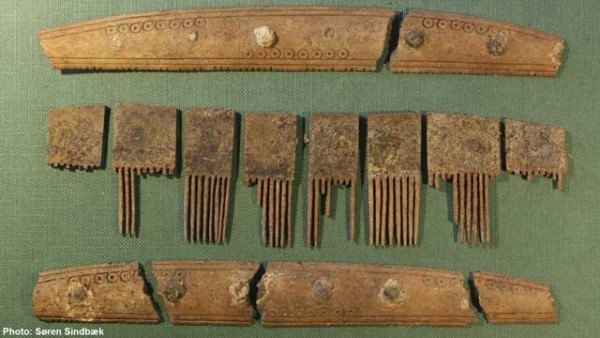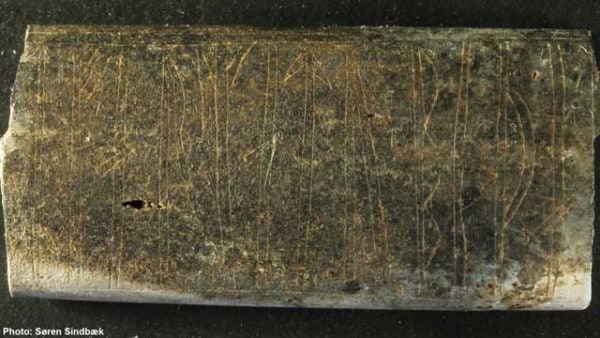I think when most of us think about the Viking age we often tend to think about it as something that was in a certain way, and did not change much, but that could not be further from the truth. Just like today, the Viking society developed gradually over time, their technology, culture, and language kept evolving just like it would in any other society.
For instance, Viking enthusiasts know that the runes the Vikings used were called the Younger Futhark (Fuþark) that consisted of 16 characters, which were taken in use from around the 8th century and replaced the old runic alphabet called the Elder Futhark (Fuþark) which had 24 characters.
Some of you probably knew this already, but do you also know why the runic alphabet is called Futhark? The answer is pretty simple, it got its name by using a combination of the first six letters of the runic alphabet.
The new runic alphabet did not just pop into existence out of nowhere, but according to the archaeologists, it was gradually developed.
At an excavation site in the city of Ribe in Jutland in the southwestern part of Denmark, archeologists have found another piece of the puzzle, which will help us understand how the runic alphabet has evolved. While a comb with the word comb scratched on to it in runes, may not seem particularly spectacular. I can assure you that it is.
Very few runestones have been found in Denmark from this time period, and we have even fewer organic materials with runic inscriptions, in fact, they are so extremely rare that there have only found a handful of them.
The first city in Denmark
Ribe is not just any city, but it was an important city in the early Viking age and it was somewhat of a hub. Ribe might even have been one of the first cities in Scandinavia, at least it is the first city in Denmark, which makes this area a very interesting place for archeologists. This comb along with a bone plaque with engraved runes was found at what used to be an essential part of the city during the Viking age, namely, the marketplace.
This would have been a place where there would have been lots of traffic and a market full of merchants from near and far that would have traded their merchandise. There are still multiple ongoing excavations in Ribe so there are probably more treasures in the soil, just waiting for us to be discovered.
1200-year-old Viking comb
The comb and the bone plaque are both estimated to date back to around the 8th century, which is in a time in history were the runes really changed a lot. The bone plaque was found next to a house that used to belong to a bronze caster. The runes incised on this little bone plaque can
be hard to make out, but it clearly shows that the runes have been scratched with steady hands and it suggests that it has been made by a very experienced craftsman. According to an expert in runic alphabets, the inscription on the bone plaque says ”Tobi” and might have been the name of a Viking.
But, since both of its ends are missing we don’t know for sure if it really was a name. But at least we can thank the Gods, that we are lucky enough to have this small piece in our hands today. Because by the looks of it, it seems that it has been through fire and water.
The comb has a word scratched onto both sides, on one side it says ”Kam” which means comb and on the other side it says ”Kæmme” which means pretty much the same. The handwriting is slightly different and may indicate that it had two different owners.
These two finds are not the definitive proof on how the runes changed during the beginning of the Viking age, but they are a part of a bigger puzzle that still needs to be solved. If you are curious and wonder which of the runic alphabets they use, the runes on both of these two finds are written with runes from the Younger Futhark alphabet.
According to a senior researcher at the Danish national museum in Copenhagen, it seems that the old runic alphabet simply became obsolete. In the old runic alphabet, every rune had its own name and sound. But as the language evolved, names changed and so did the sounds, they simply fell out of use.
Vikings wrote on organic materials
One of the reasons why we do not have much evidence of how the runes were used, is because it was mostly written on organic materials. This means that most of it has decomposed, but because Ribe was a Viking city it has more organic materials gathered in one spot, and that gives the organic materials better preservation conditions because the more organic materials that are nearby the better the material is preserved.
The Vikings also wrote runes onto stones, but it was not an everyday thing, which is why the organic materials are so important and will give us a deeper picture and a better understanding of how the runes were used and how they gradually evolved. But the rune stones also give us an indication of how the runes evolved, and therefore are also part of the puzzle.
It is actually amazing to think about, that someone sat here and scratched these runes on a comb 1200 years ago. A person just like you and me, that had a normal life with its daily routines and responsibilities. I would have so many questions to ask someone from back then if I had the chance. If you could ask one single question to a Viking, what would you ask and why?


